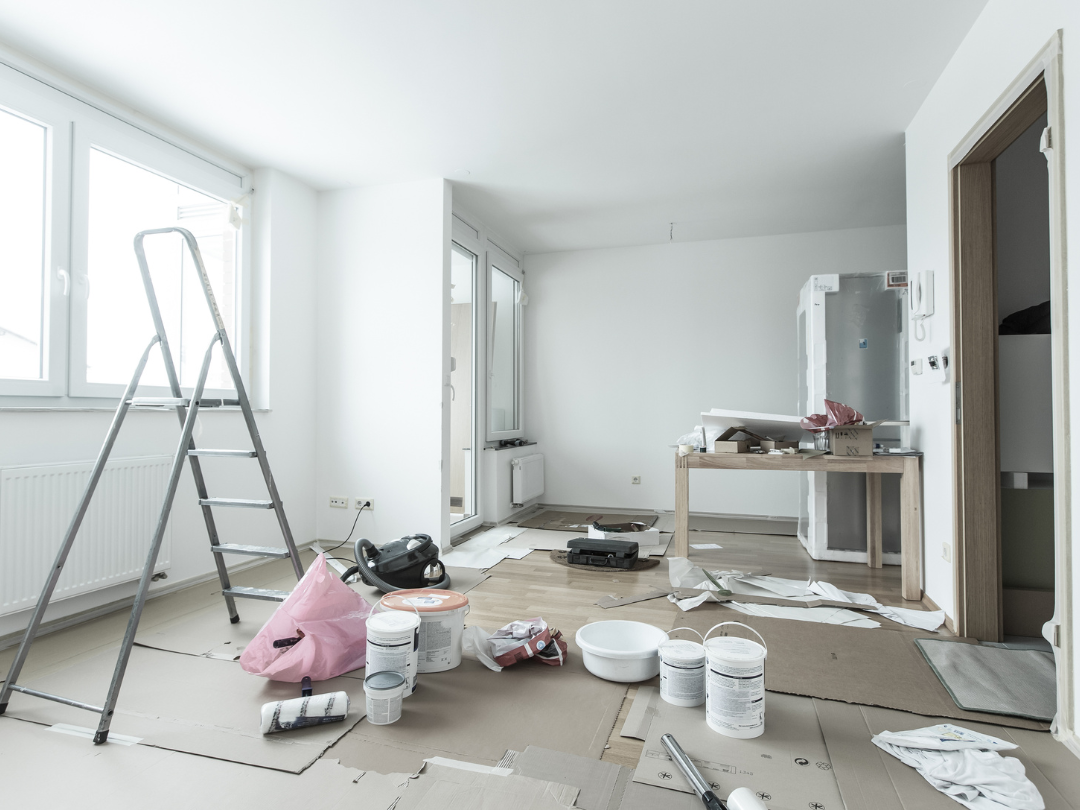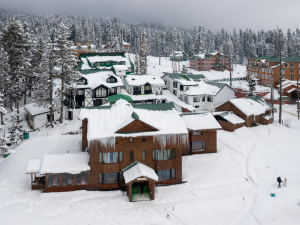Get the week's most popular posts delivered to your inbox.
Our weekly update is free yet priceless and you're less than a minute away from getting the current edition.
In the unlikely event we disappoint, you can unsubscribe with a single click!
Last Updated on October 27, 2025 by teamobn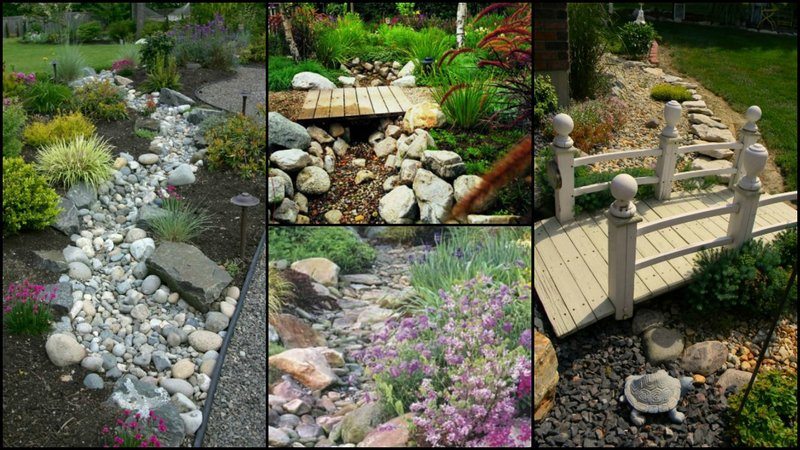
Even though Australia has had devastating floods in the last couple of years, it wasn’t long ago that most major cities and towns (big and small) were under major water restrictions.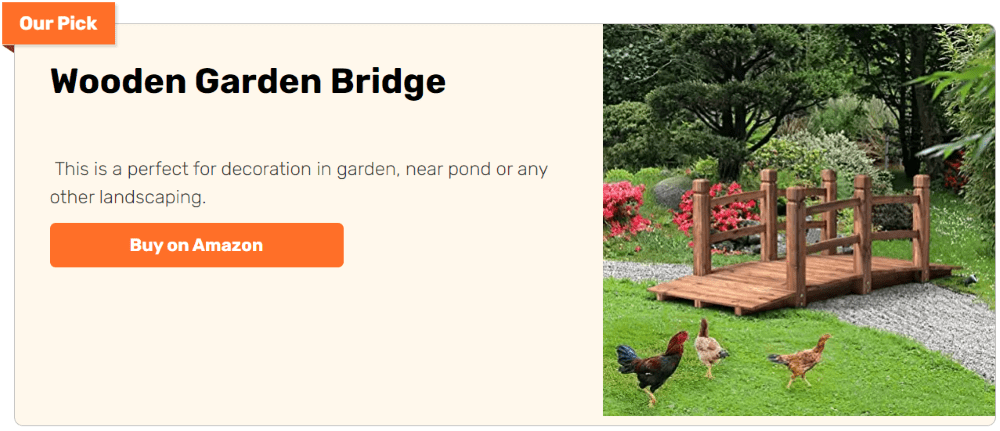
In her wonderful poem “My Country”, Dorothea McKellar, summarised the Australian climate in just one line, as a land “…of droughts and flooding rains”. We’ve reproduced the entire poem which you’ll find beneath the images.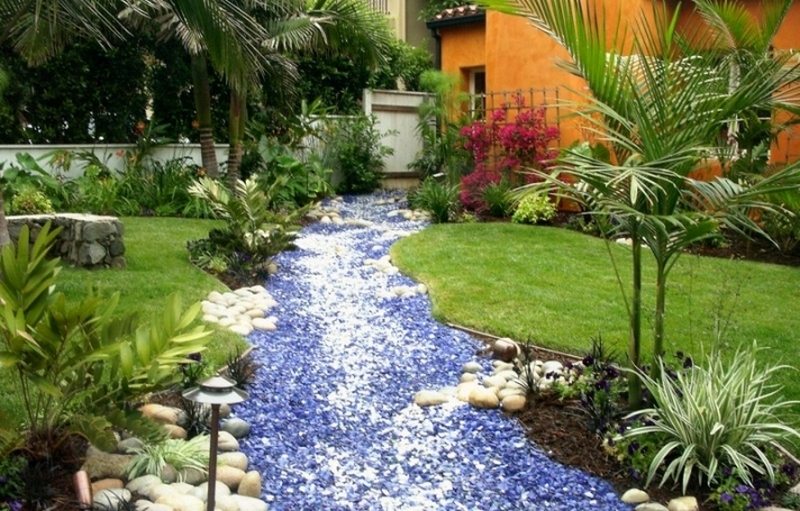
Australia isn’t the only country with severe weather challenges. Southern Europe, much of Africa, and the Americas are also affected.
Dry Creek Bed gardens are a great way to add beauty even in – or perhaps, especially in – very arid areas. Yet dry creek bed landscaping can be used just as effectively in areas with good rainfall – you simply need to select appropriate plants. And you won’t need to hire experts for these home improvement ideas.
Dry creek bed landscaping offers plenty of room for creativity — from naturalistic curves to modern minimalist looks. Before you start planning your layout, take a look at these inspiring dry creek bed garden ideas to visualize different styles and materials that can elevate your project.
Contents
Environmental Benefits
Dry creek bed gardening goes beyond aesthetics. This eco-friendly solution blends into gardens and yards and offers practical and sustainable benefits. This landscaping helps homes and the environment by conserving water and sustaining local ecosystems.
Here are some key environmental benefits of incorporating dry creek bed landscaping into your outdoor space.
Promotes Water Conservation
One of the biggest environmental benefits of dry creek bed landscaping is water saving. Traditional lawns and gardens may need extensive irrigation in drought-prone areas. Dry creek bed landscaping uses drought-tolerant plants, rocks, and pebbles that need little water. This method conserves water and lowers household utility expenses.
Dry creek bed landscaping simulates natural streams without water. This conserves local water and makes gardens more sustainable. Choose native and drought-tolerant plants to boost your landscape’s water savings.
Reduces Soil Erosion
Rainy or poorly structured soils often erode. Dry creek bed landscaping stabilizes soil and manages runoff. This landscaping channels water after heavy rains by strategically putting rocks, boulders, and gravel, preserving topsoil.
A dry creek bed on a sloping yard slows water flow and prevents erosion. Rocks and plants in the landscape prevent water from damaging the soil. This works well in metropolitan settings where traditional drainage systems may fail during storms.
Supports Local Wildlife
Dry creek bed landscaping can serve as a habitat for local wildlife, including beneficial insects, birds, and small mammals. By incorporating native plants that thrive in dry environments, you create a natural refuge that supports pollinators such as bees and butterflies. This type of landscaping is especially valuable in areas where natural habitats have been disrupted by development.
The rocks, pebbles, and plant life in dry creek bed landscaping create micro-habitats that offer shade and shelter for various species. For example, birds may use the space for nesting or resting, while small mammals can find protection among the rocks. By designing your landscape with biodiversity in mind, you contribute to a healthier local ecosystem.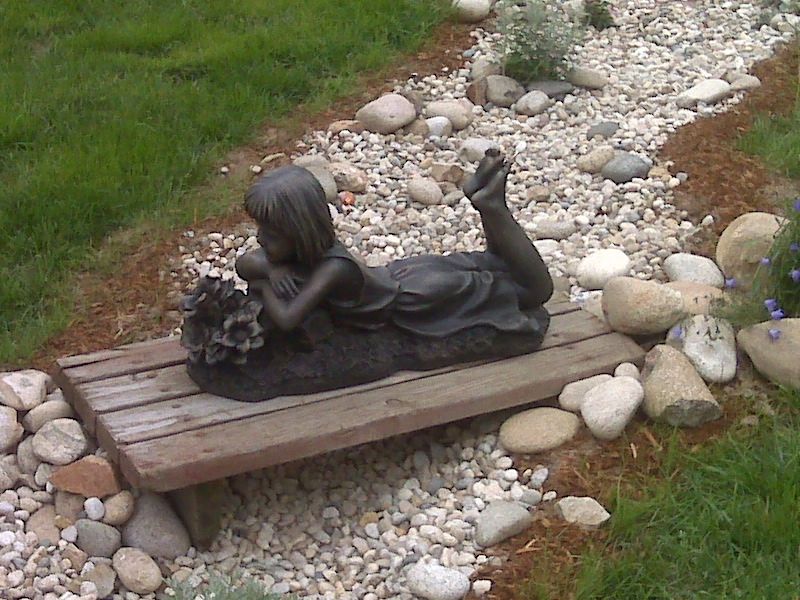
Lowers Carbon Footprint
Traditional lawn maintenance requires regular mowing, watering, and the use of fertilizers or pesticides, all of which can contribute to a higher carbon footprint. Dry creek bed landscaping, on the other hand, is low-maintenance and does not rely on gas-powered tools or chemical treatments. This results in lower emissions and a reduced environmental impact.
By choosing dry creek bed landscaping, you eliminate the need for mowing and minimize water usage, both of which play a significant role in reducing carbon emissions. Additionally, native plants used in this type of landscaping often require fewer resources, allowing them to thrive with minimal intervention.
Improves Water Quality
Dry creek bed landscaping filters rainfall naturally, improving water quality. Rainwater runs through layers of rocks, gravel, and plants, filtering it. Pollutants and sediments are removed, making groundwater cleaner.
Flat surfaces and typical gardens can contribute to fertilizer and chemical runoff, whereas dry creek bed landscaping reduces pollution. The natural flow of water via rocks and plants filters contaminants and lets clean water into the soil.
Minimizes Heat Island Effect
Urban concrete and paved areas can cause the heat island effect, raising temperatures above rural locations. Dry creek bed landscaping can aid by using natural components that absorb less heat than artificial surfaces.
Dry creek bed landscaping using rocks, gravel, and plants cools the microclimate. Natural elements in a dry creek bed reflect heat, decreasing the temperature, unlike asphalt or concrete. This makes outdoor spaces more pleasant and minimizes energy-intensive cooling.
Environmentally friendly dry creek bed landscaping is ideal for eco-conscious homes. It conserves water, minimizes soil erosion, supports local animals, decreases carbon footprints, improves water quality, and eliminates heat islands. According to experts at JPK Landscaping, incorporating dry river beds into your yard design not only enhances sustainability but also adds natural structure and visual movement to your landscape – making it a smart solution for both form and function. When you build a sustainable, beautiful landscape, you’re helping your home’s value and livability while also benefiting the environment. What could be better than a dry creek bed garden?
Plant Selection Guide for Dry Creek Bed Landscaping
Choosing the right plants is crucial to the success of dry creek bed landscaping. The best plant choices will not only enhance the visual appeal of your space but also contribute to the sustainability and functionality of the landscape. Here, we provide a comprehensive guide to help you select plants that thrive in dry conditions and complement your dry creek bed or dry creek bed landscaping ideas.
Drought-Tolerant Ground Covers
Ground covers play an essential role in dry creek bed landscaping by preventing soil erosion and filling in gaps with lush greenery. Opt for drought-tolerant varieties that can withstand dry conditions and require minimal maintenance. Some excellent choices include:
- Creeping Thyme: This hardy ground cover is perfect for adding color and fragrance to your dry Creek bed. It grows low to the ground and spreads quickly, creating a natural carpet of green with small purple or pink flowers.
- Sedum: Available in various shades and textures, sedum is an ideal plant for dry creek bed landscaping ideas. It is highly drought-tolerant and adds a unique visual interest with its fleshy leaves and star-shaped blooms.
Ornamental Grasses for Texture
Ornamental grasses add movement and texture to dry creek bed landscaping. They mimic the flow of water and provide a sense of continuity throughout the space. Choose grasses that can withstand arid climates and require little water to thrive.
- Blue Fescue: This compact, blue-toned grass is perfect for dry creek bed landscaping. Its fine texture and color contrast beautifully with rocks and pebbles.
- Feather Reed Grass (Calamagrostis): Known for its tall, elegant plumes, feather reed grass adds height and a dynamic element to your landscape. It grows well in poor soil and is resilient during dry seasons.
Native Shrubs for Structure
Incorporating native shrubs in your dry creek bed landscaping brings structure and depth to your garden while ensuring that the plants are adapted to your local environment. Native plants typically require less water and care, making them ideal for dry creek bed landscaping ideas.
- Lavender: This shrub not only adds a pop of color but also fills the air with its calming scent. Lavender thrives in well-drained soil and full sun, making it perfect for dry environments.
- Sage (Salvia): Sage varieties like autumn sage or purple sage are excellent choices for dry creek bed landscaping. They offer colorful blooms and are highly drought-resistant.
Flowering Perennials for Seasonal Interest
Adding flowering perennials to your dry creek bed landscaping ensures that your space remains vibrant throughout the growing season. These plants require minimal water once established and provide bursts of color that can transform your garden.
- Blanket Flower (Gaillardia): This hardy perennial is known for its bright red and yellow blooms that resemble a warm blanket. It thrives in full sun and dry conditions, making it a great addition to dry creek bed landscaping ideas.
- Black-Eyed Susan: This cheerful, daisy-like flower brings a touch of classic beauty to any landscape. It is drought-tolerant and blooms from midsummer to fall, ensuring long-lasting color in your dry crrek bed landscaping.
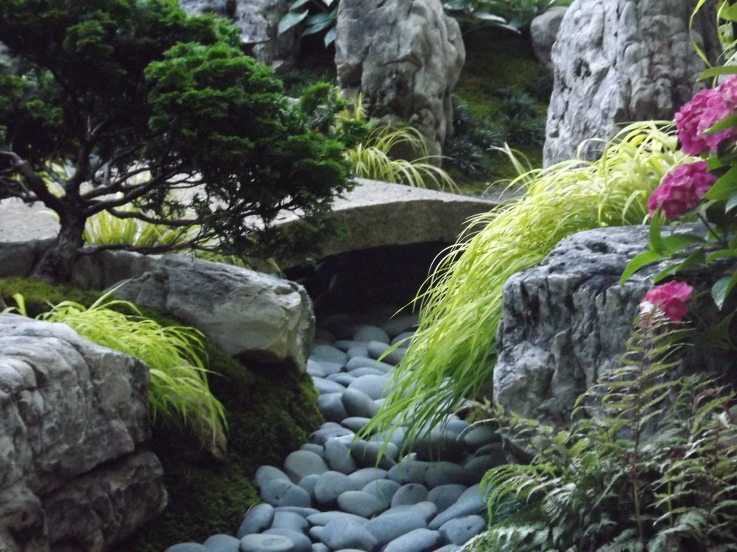
Succulents for Low-Maintenance Beauty
Succulents are the perfect addition to dry creek bed landscaping due to their natural ability to retain water and withstand harsh conditions. They come in various shapes, sizes, and colors, adding visual diversity to your garden.
- Hens and Chicks (Sempervivum): These small, rosette-forming succulents are easy to care for and spread rapidly. They are perfect for filling in spaces between rocks and along the edges of your dry creek bed.
- Agave: For a bold statement, include agave in your dry creek bed landscaping. This plant is not only drought-tolerant but also adds a striking architectural element to the garden.
Complementary Trees for Shade
If your dry creek bed landscaping project spans a larger area, adding trees that thrive in arid conditions can provide shade and enhance the overall design. Choose varieties that do not require excessive water and are suited for your climate.
- Desert Willow (Chilopsis linearis): This tree produces delicate, orchid-like flowers and can withstand dry conditions. It adds vertical interest and creates dappled shade, perfect for a larger dry creek bed landscape.
- Crape Myrtle (Lagerstroemia): Known for its vibrant summer blooms and hardy nature, crape myrtle is an excellent tree for dry environments. Its multiple colors add visual appeal and complement the earthy tones of rocks and pebbles.
Selecting the right plants for your dry creek bed landscaping can make all the difference in creating a sustainable and visually appealing outdoor space. From drought-tolerant ground covers to hardy shrubs and striking succulents, each plant brings its unique benefits to the garden. By incorporating these options, you can enhance your dry creek bed or explore new dry creek bed landscaping ideas that thrive in dry conditions while adding beauty and resilience to your landscape.
Click on any image to start the lightbox display. Use your Esc key to close the lightbox. You can also view the images as a slideshow if you prefer 😎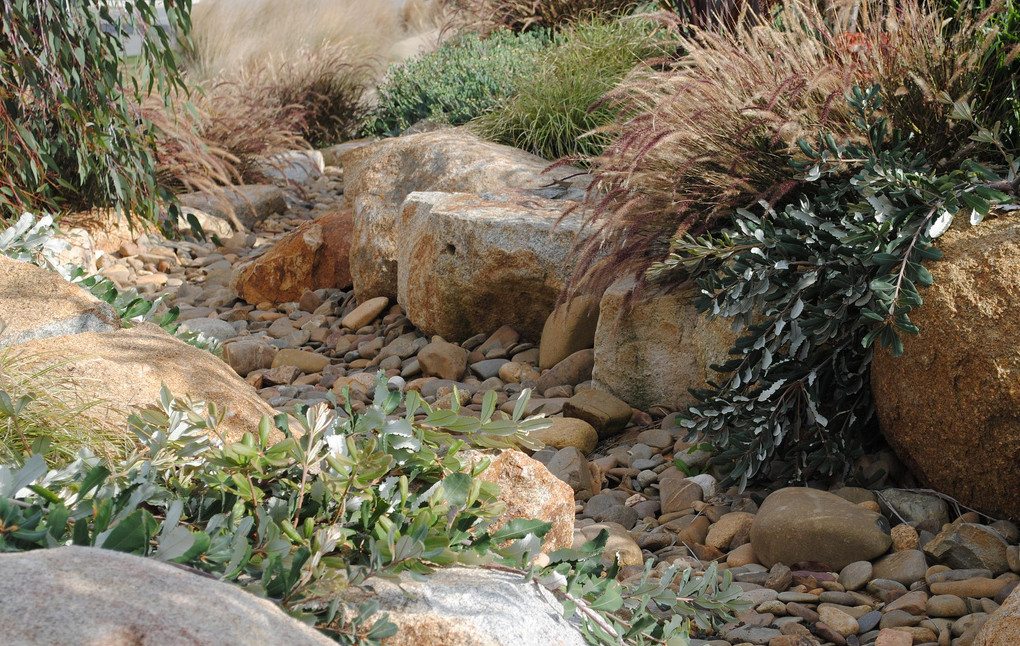

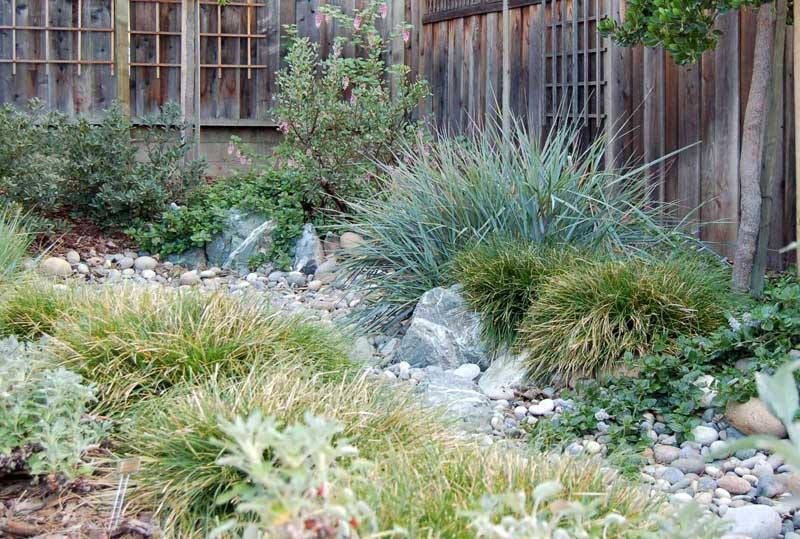
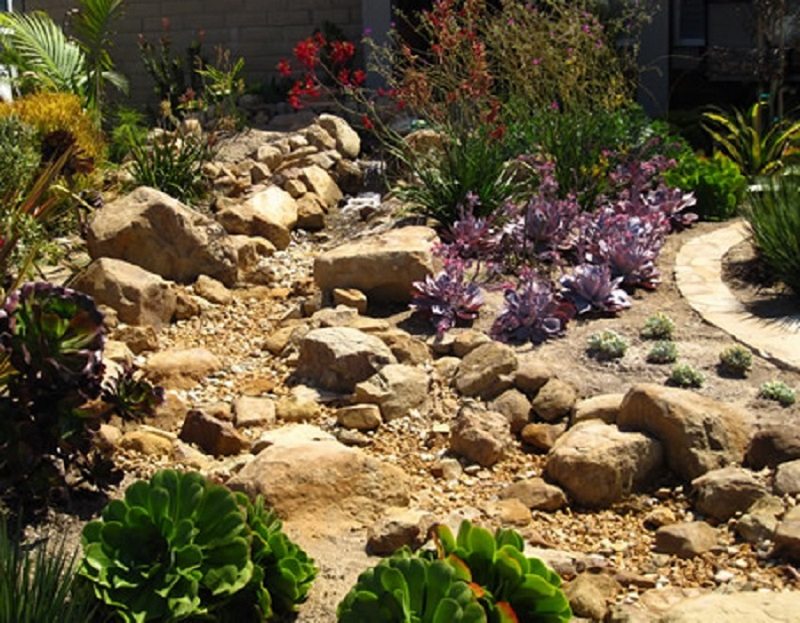


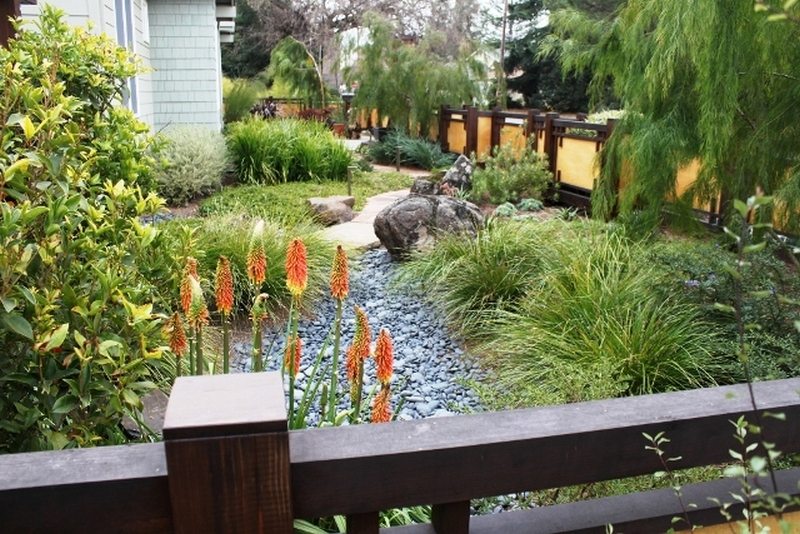

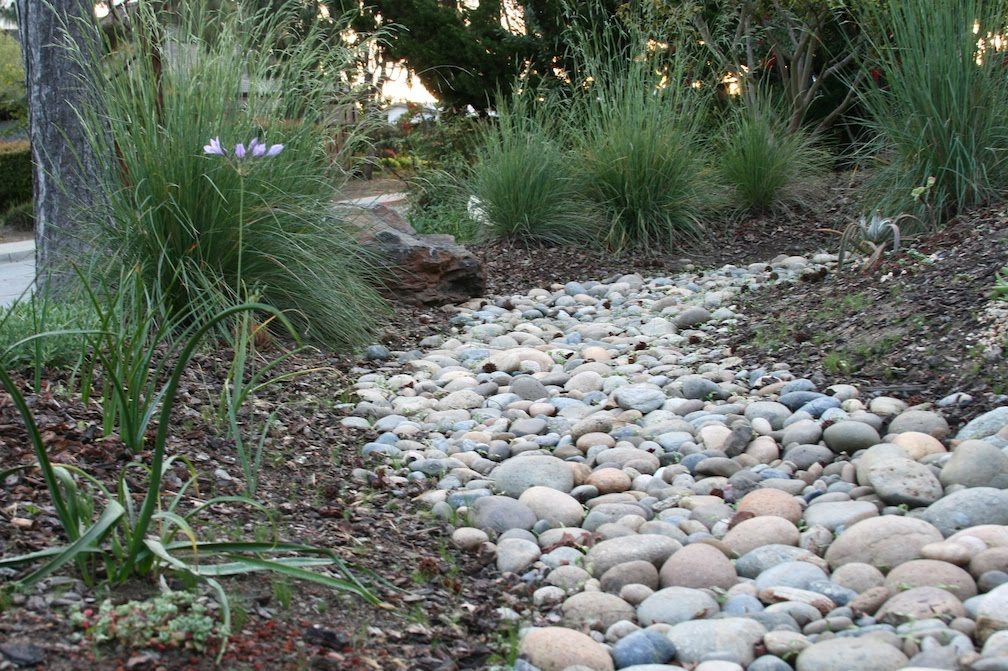
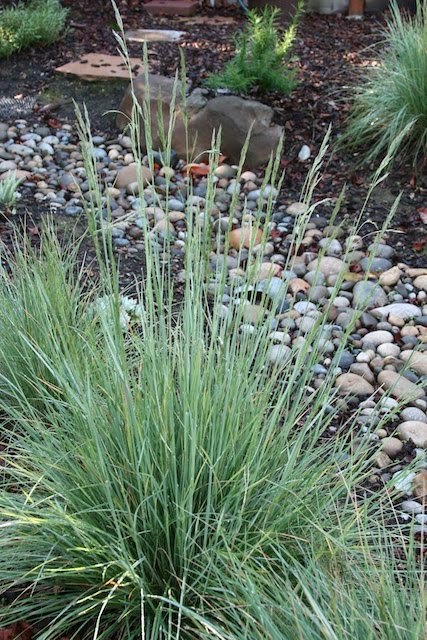
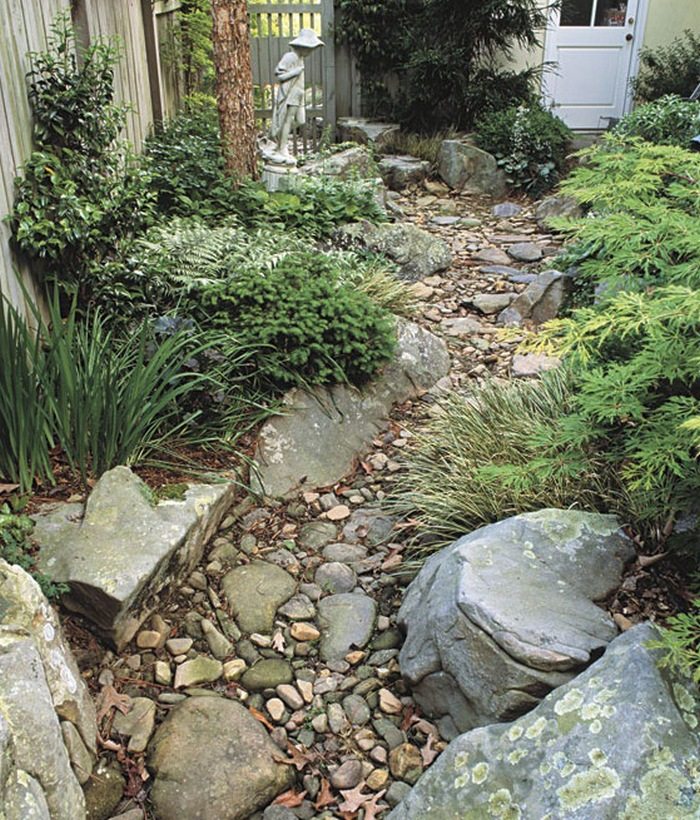
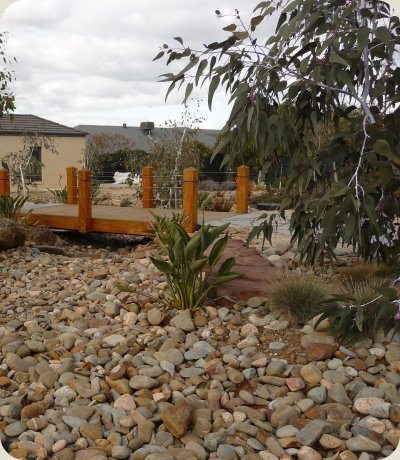
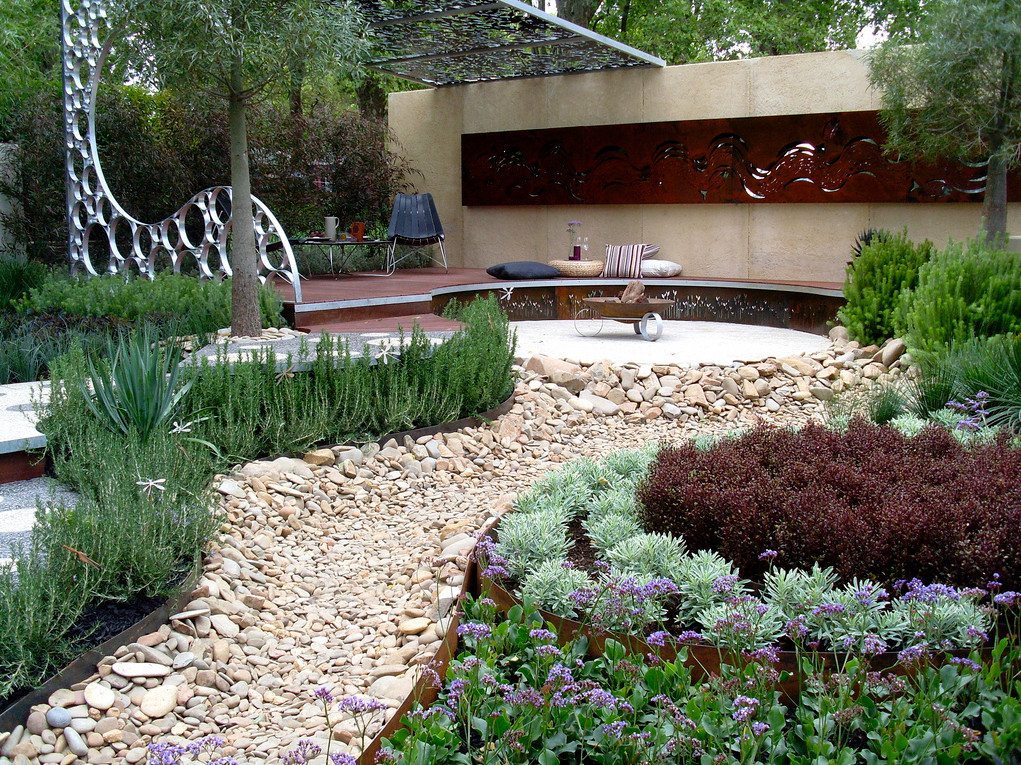
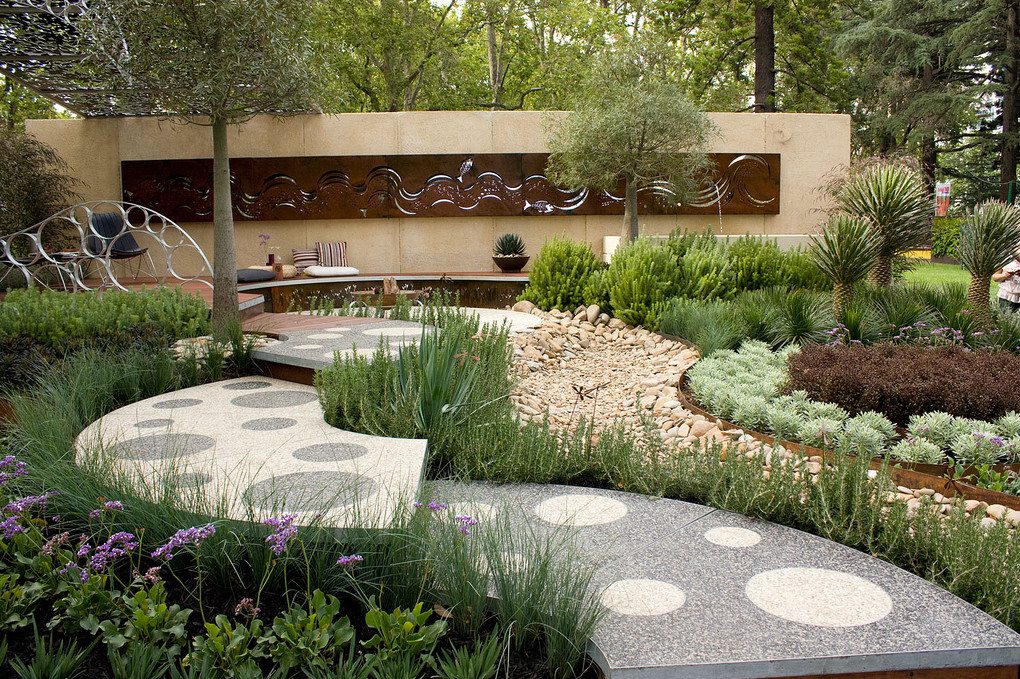
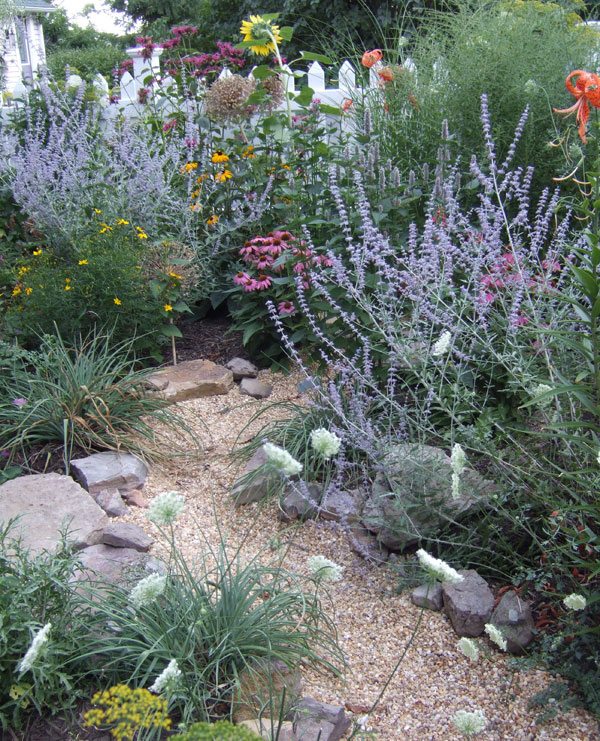
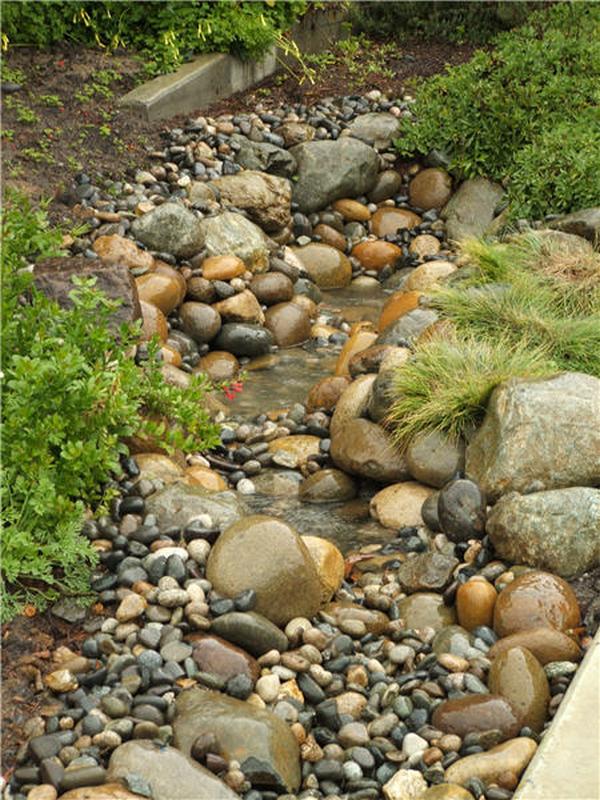
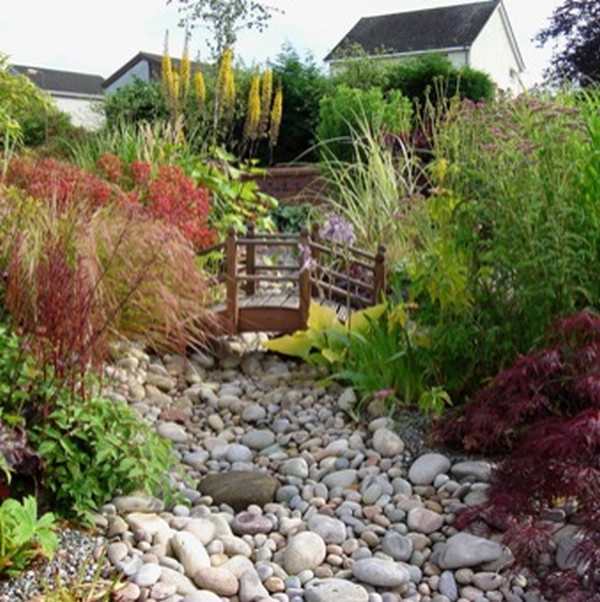
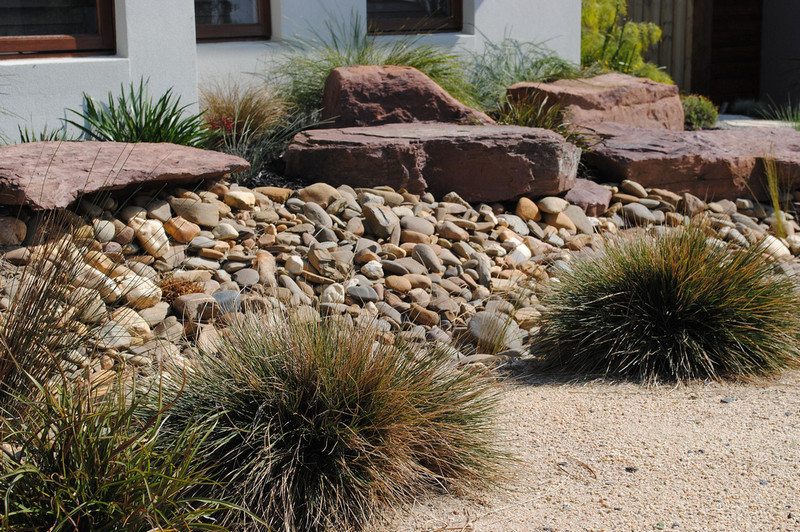
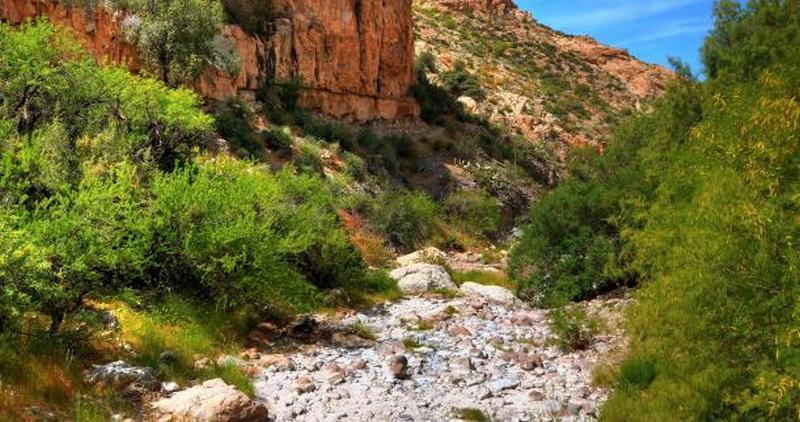
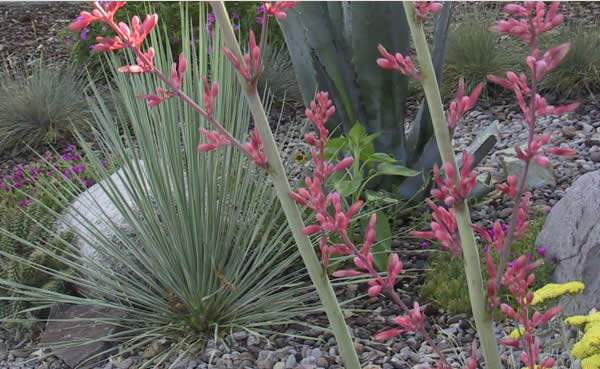

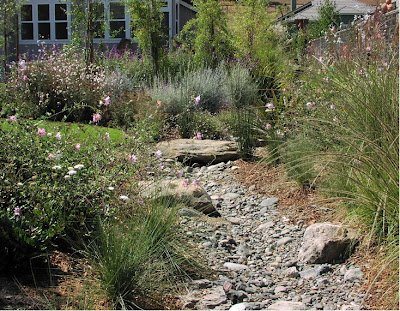
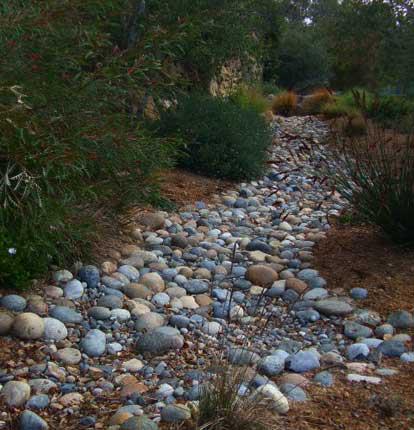
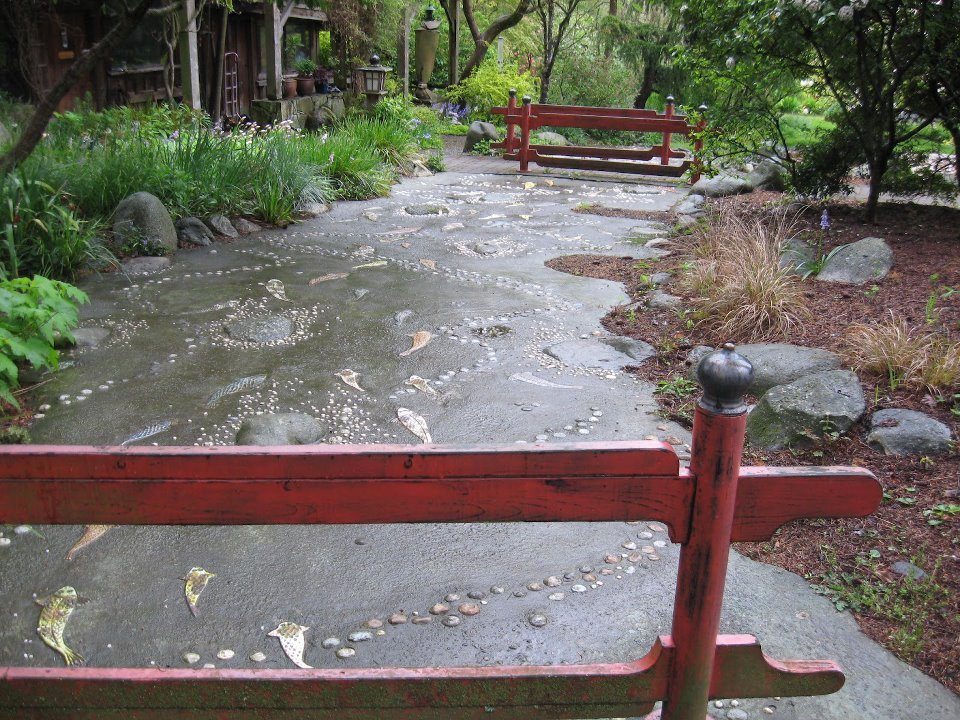
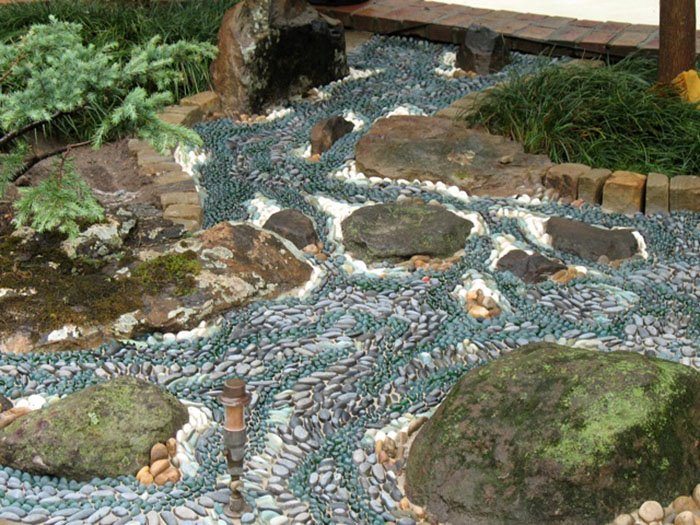
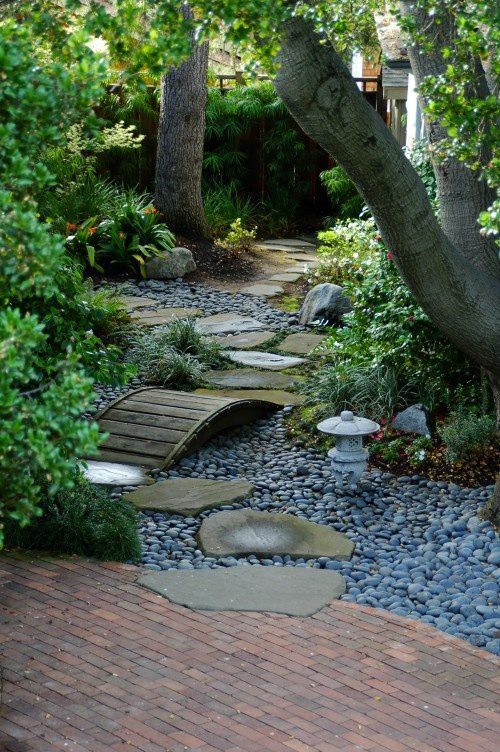
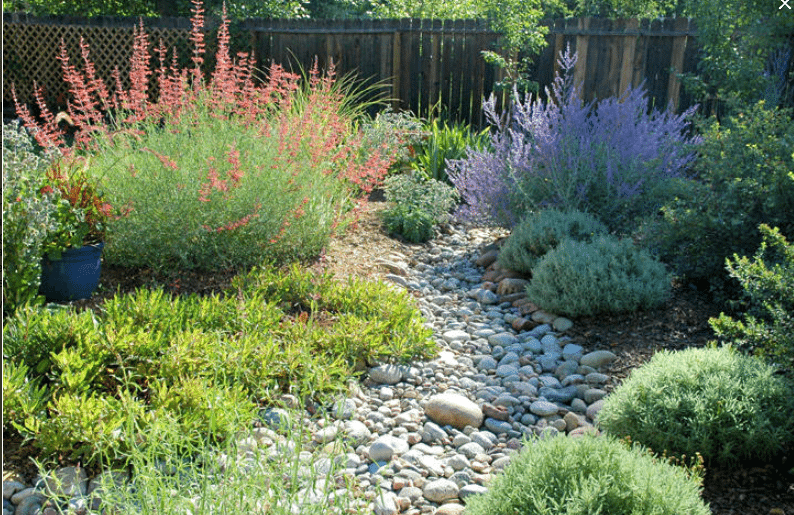
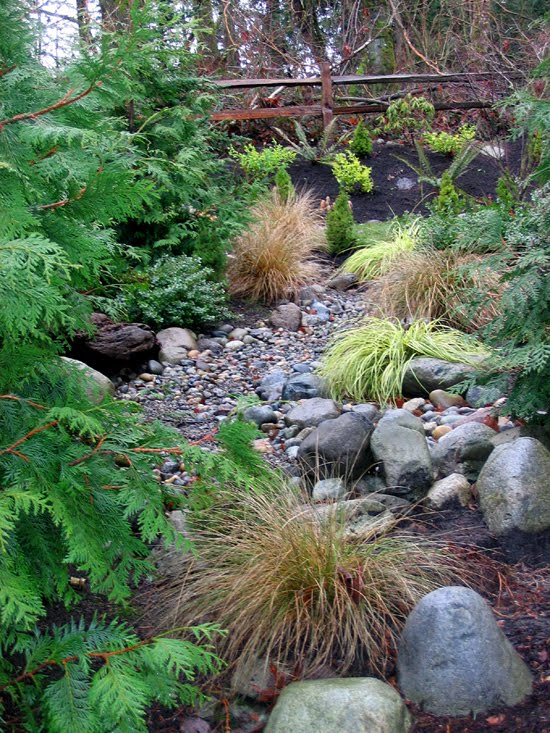
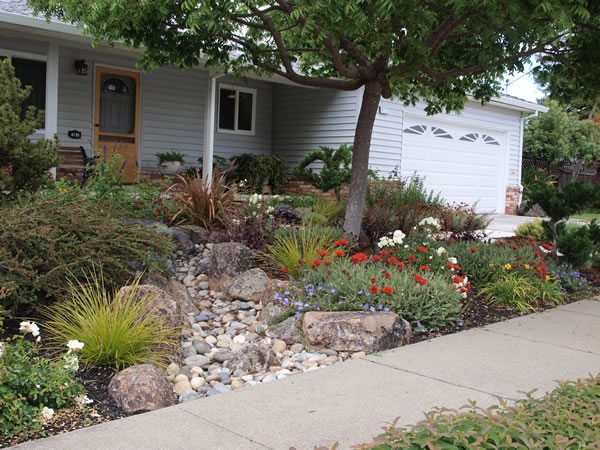
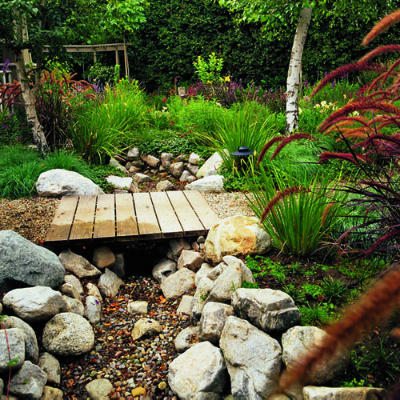
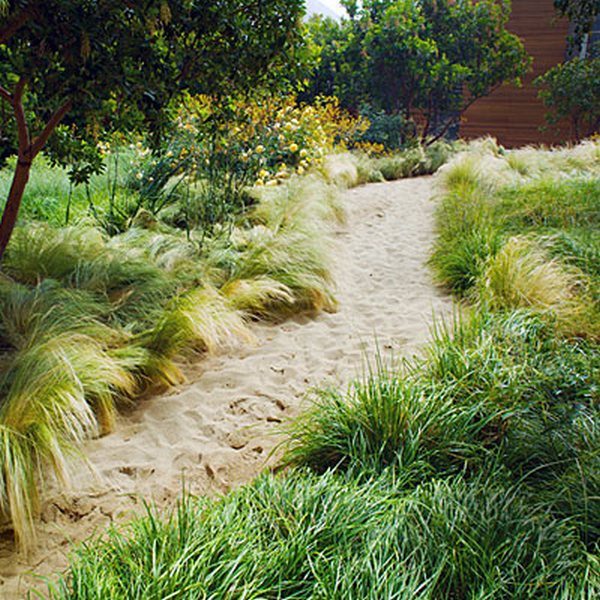




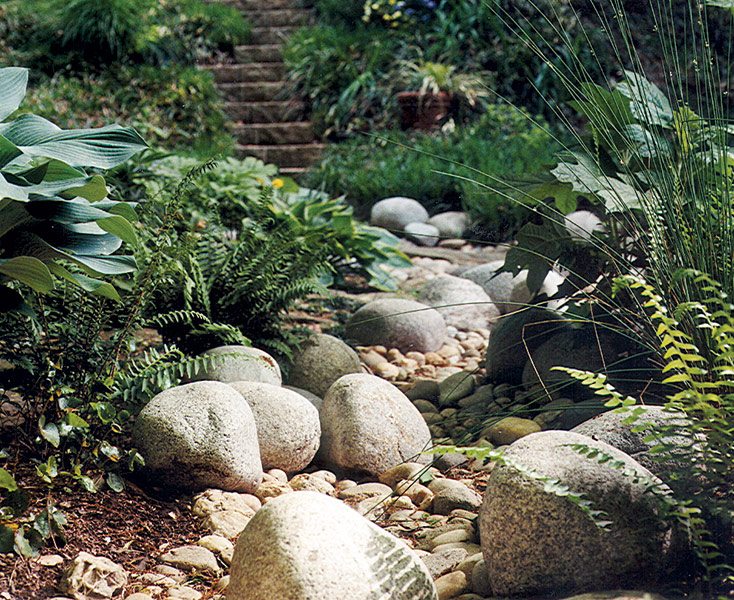
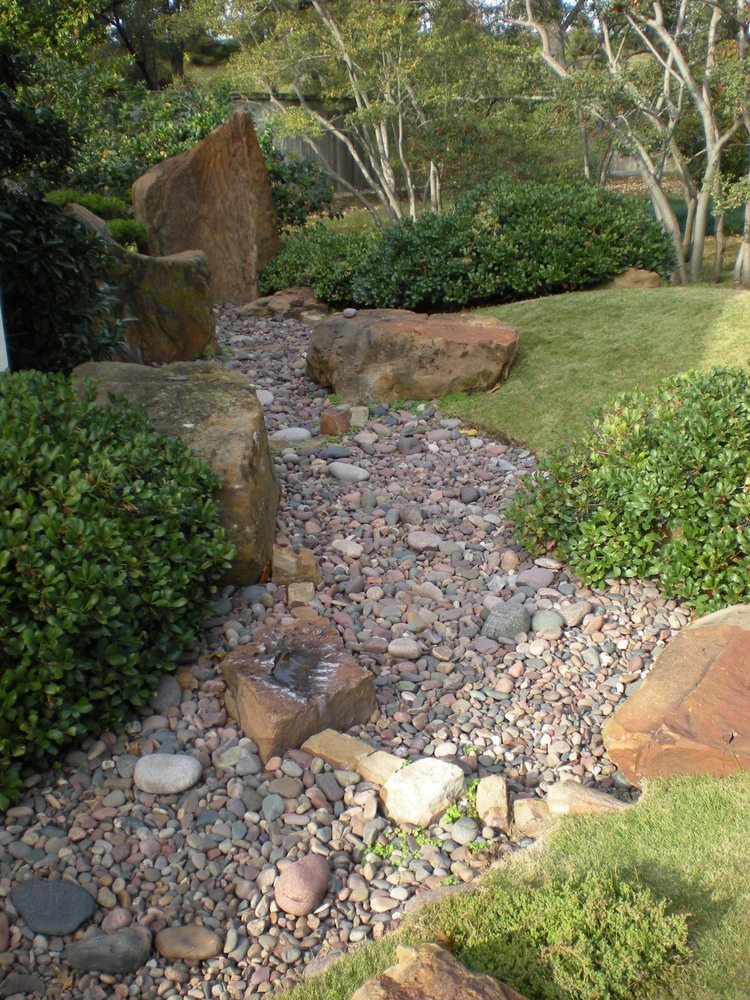
If you like the simple elegance of these gardens, you will also like our gardening ideas…
Conclusion
Dry creek bed landscaping combines beauty with sustainability, creating a low-maintenance landscape that thrives in dry conditions. This type of garden conserves water, supports local wildlife, and requires minimal upkeep. Choosing the right plants, rocks, and design elements can transform any outdoor space into a functional, eco-friendly oasis.
We have more garden landscaping guide to boost your outdoor space. Check out our garden pond guide!
My Country
by Dorothea Mackellar – 1885-1968
(Written in 1904 while in England with her father who preferred ‘the old country’ to that from which he derived his wealth.)
The love of field and coppice,
Of green and shaded lanes.
Of ordered woods and gardens
Is running in your veins,
Strong love of grey-blue distance
Brown streams and soft dim skies
I know but cannot share it,
My love is otherwise.
I love a sunburnt country,
A land of sweeping plains,
Of ragged mountain ranges,
Of droughts and flooding rains.
I love her far horizons,
I love her jewel-sea,
Her beauty and her terror –
The wide brown land for me!
A stark white ring-barked forest
All tragic to the moon,
The sapphire-misted mountains,
The hot gold hush of noon.
Green tangle of the brushes,
Where lithe lianas coil,
And orchids deck the tree-tops
And ferns the warm dark soil.
Core of my heart, my country!
Her pitiless blue sky,
When sick at heart, around us,
We see the cattle die –
But then the grey clouds gather,
And we can bless again
The drumming of an army,
The steady, soaking rain.
Core of my heart, my country!
Land of the Rainbow Gold,
For flood and fire and famine,
She pays us back threefold –
Over the thirsty paddocks,
Watch, after many days,
The filmy veil of greenness
That thickens as we gaze.
An opal-hearted country,
A wilful, lavish land –
All you who have not loved her,
You will not understand –
Though earth holds many splendours,
Wherever I may die,
I know to what brown country
My homing thoughts will fly.
Get the week's most popular posts delivered to your inbox.
Our weekly update is free yet priceless and you're less than a minute away from getting the current edition.
In the unlikely event we disappoint, you can unsubscribe with a single click!




